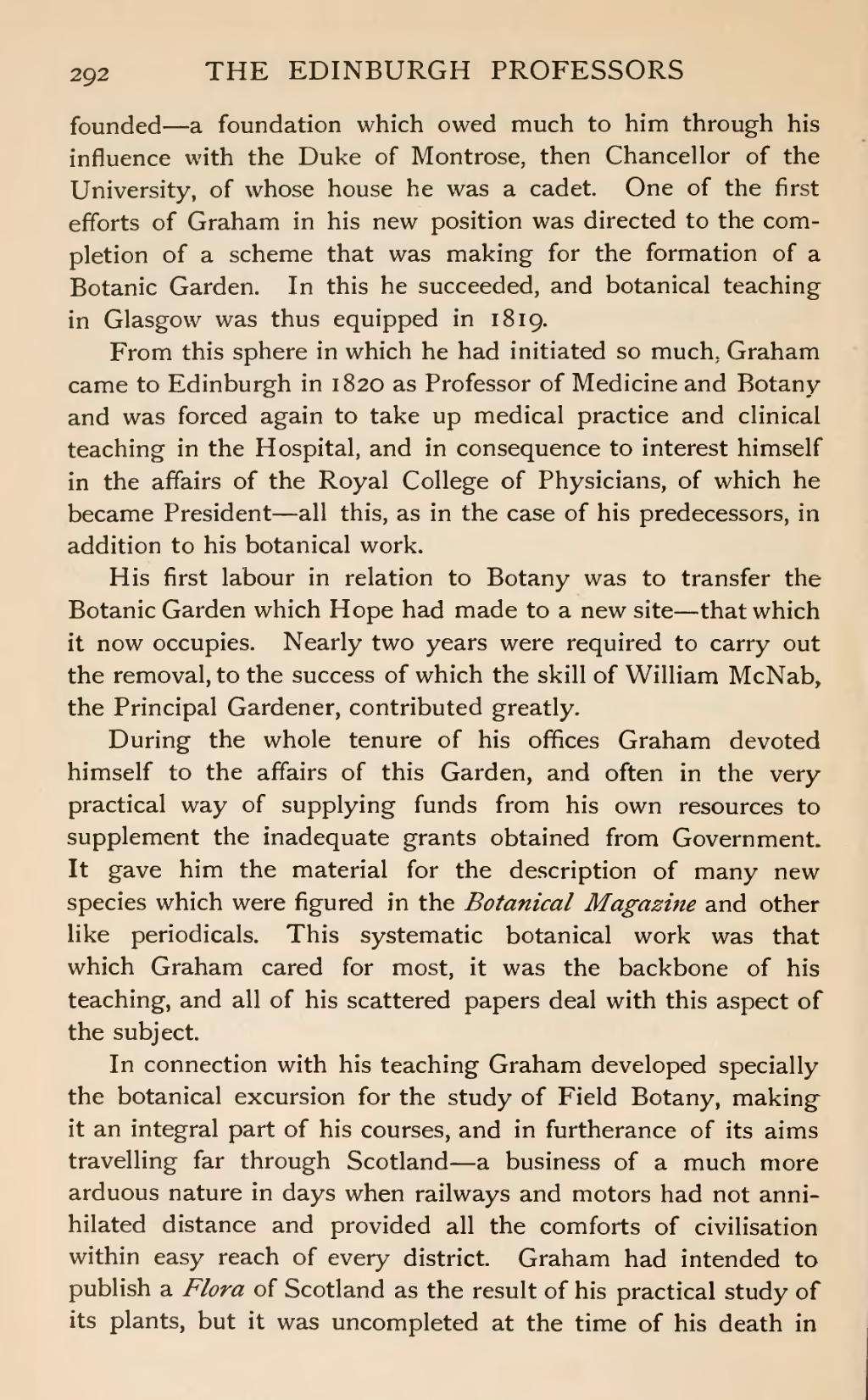founded—a foundation which owed much to him through his influence with the Duke of Montrose, then Chancellor of the University, of whose house he was a cadet. One of the first efforts of Graham in his new position was directed to the completion of a scheme that was making for the formation of a Botanic Garden. In this he succeeded, and botanical teaching in Glasgow was thus equipped in 1819.
From this sphere in which he had initiated so much. Graham came to Edinburgh in 1820 as Professor of Medicine and Botany and was forced again to take up medical practice and clinical teaching in the Hospital, and in consequence to interest himself in the affairs of the Royal College of Physicians, of which he became President—all this, as in the case of his predecessors, in addition to his botanical work.
His first labour in relation to Botany was to transfer the Botanic Garden which Hope had made to a new site—that which it now occupies. Nearly two years were required to carry out the removal, to the success of which the skill of William McNab, the Principal Gardener, contributed greatly.
During the whole tenure of his offices Graham devoted himself to the affairs of this Garden, and often in the very practical way of supplying funds from his own resources to supplement the inadequate grants obtained from Government. It gave him the material for the description of many new species which were figured in the Botanical Magazine and other like periodicals. This systematic botanical work was that which Graham cared for most, it was the backbone of his teaching, and all of his scattered papers deal with this aspect of the subject.
In connection with his teaching Graham developed specially the botanical excursion for the study of Field Botany, making it an integral part of his courses, and in furtherance of its aims travelling far through Scotland—a business of a much more arduous nature in days when railways and motors had not annihilated distance and provided all the comforts of civilisation within easy reach of every district. Graham had intended to publish a Flora of Scotland as the result of his practical study of its plants, but it was uncompleted at the time of his death in
